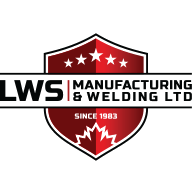Common Sheet Metal Forming Processes
Sheet metal is a popular material for the welding and fabrication of various metal products. Whether you are working with aluminum, steel, or stainless steel, it is important to understand each type of sheet metal forming process to ensure that you are using the correct techniques for the job. As a leading provider of fabrication and welding solutions, the team at LWS Manufacturing & Welding knows how complex metal forming can be. That is why we have outlined 5 common sheet metal forming processes and their defining traits to help you understand their differences and what they are typically used for.
Learn about the most common types of sheet metal.
5 Types of Sheet Metal Forming Processes
The following sheet metal forming processes are commonly utilized for a variety of projects:
1. Curling
When sheet metal is initially cut, the stock material often contains sharp burrs along the edges. Curling is a metal forming process that works to remove these burrs and produce smooth edges by adding a circular roll to the edge of the metal. This improves the strength of the edge while allowing for safer handling.
2. Bending
Bending fabrication is a process that forms metal parts and components to a desired shape by applying force to plastically deform it. This transforms the sheet metal to a desired geometric shape without affecting its volume. In other words, bending changes the shape of the metal without cutting or subtracting from any of the material.
3. Ironing
Ironing is performed to achieve a uniform wall thickness with sheet metal. The most common application for ironing is forming material for aluminum cans as stock aluminum sheet metal must be thinned to be rolled into cans. Much like bending, ironing transforms the sheet metal without taking any of it away.
4. Laser/Plasma Cutting
Laser/plasma cutting is an increasingly common fabrication method that utilizes a high-powered laser beam to cut material from sheet metal and create a desired shape or design. This process is used to produce complex parts and components without the need for custom tooling. When compared to other conventional cutting methods, metal sheets cut with lasers typically have less material contamination, waste, and potential for damage.
5. Punching
Metal punching is a subtractive metal fabrication process that forms and cuts metal as it passes through or under a punch press. The metal punching tool and accompanying die set work together to shape and form custom designs into metal workpieces. Though some punch presses are manually operated, most modern presses are part of industrial CNC machines. Punching is a cost-effective method for forming metals in medium to high production volumes, especially when used with CNC machines.
To learn more about our fabrication services or metal products, get in touch with the team at LWS Manufacturing & Welding. We can be reached through our online contact form and will be happy to answer any questions you may have regarding our services or the details of your project.




